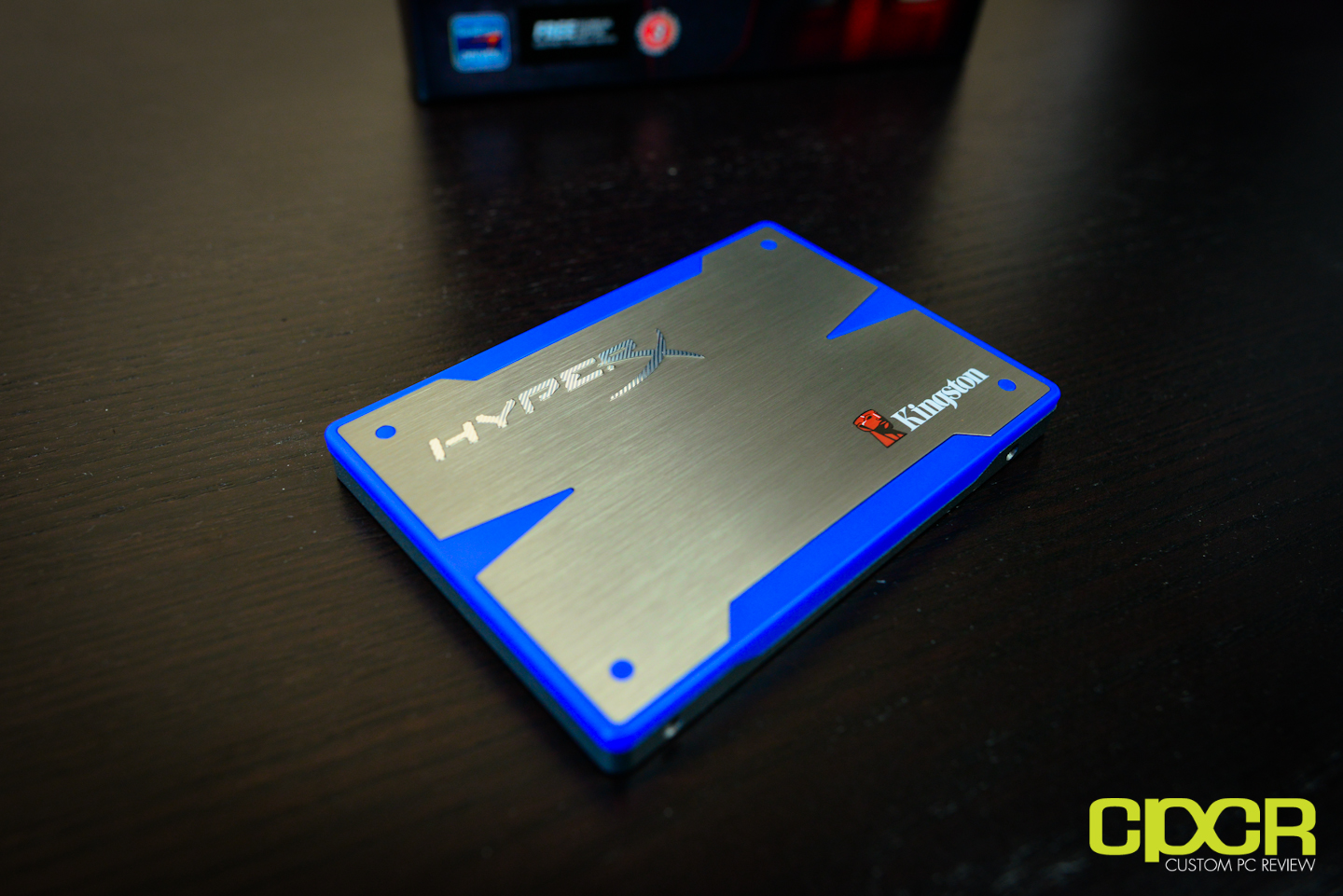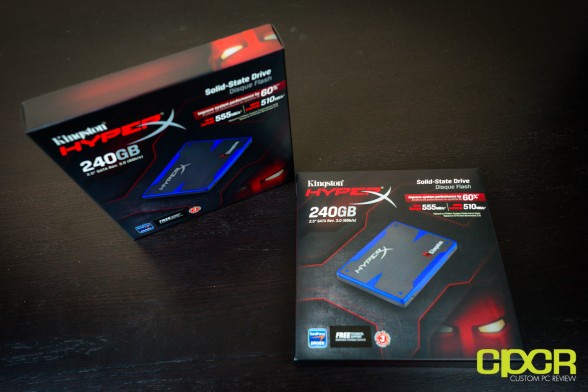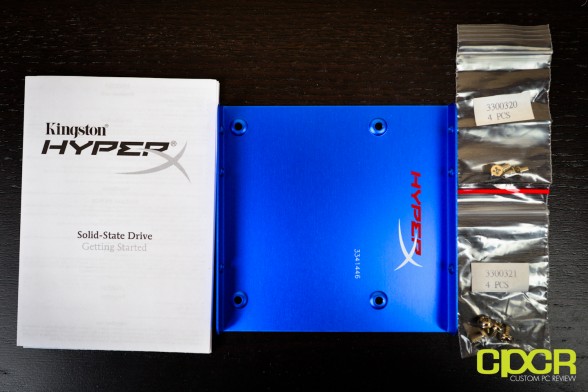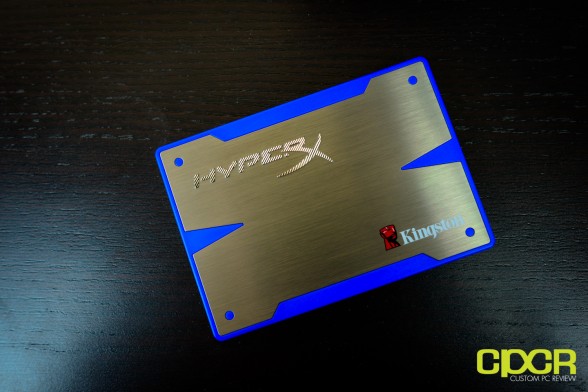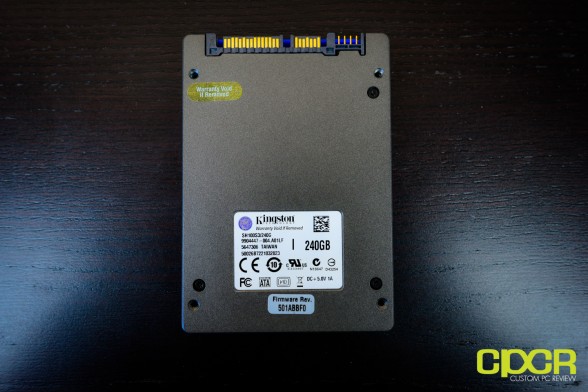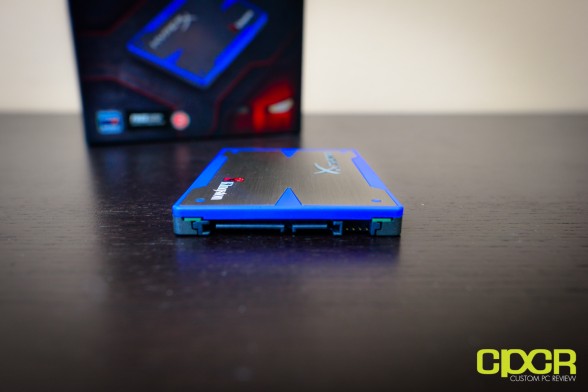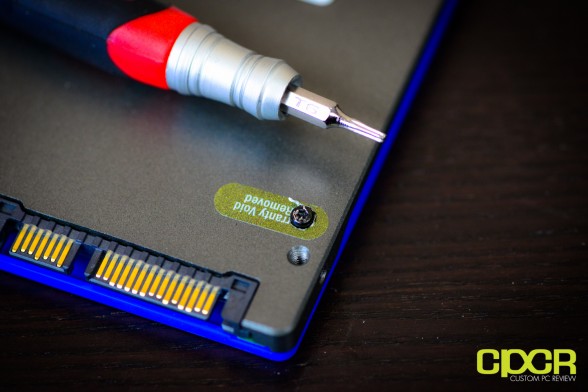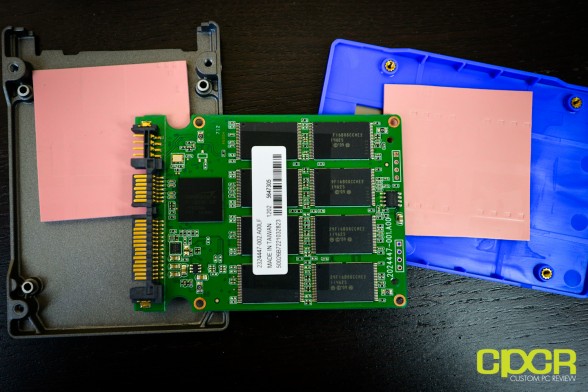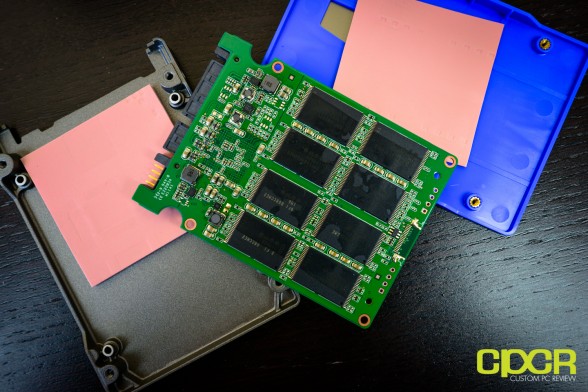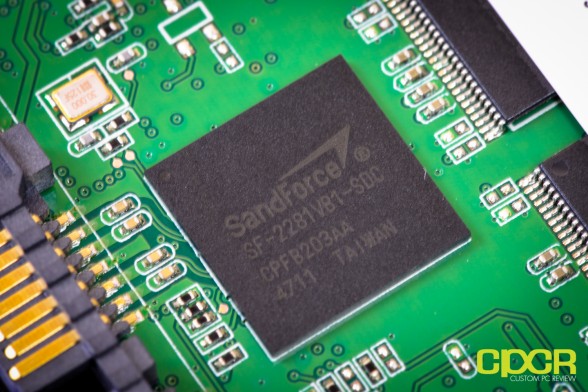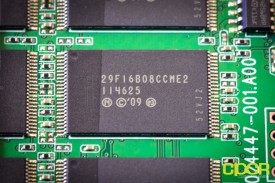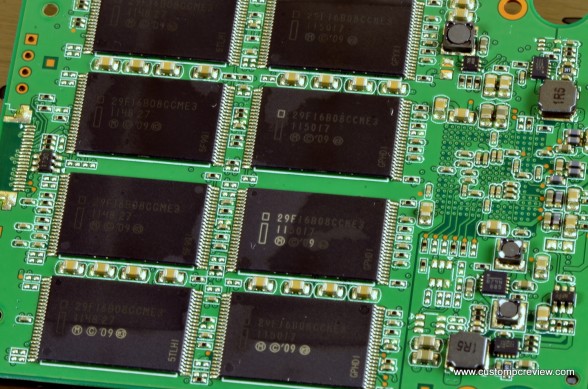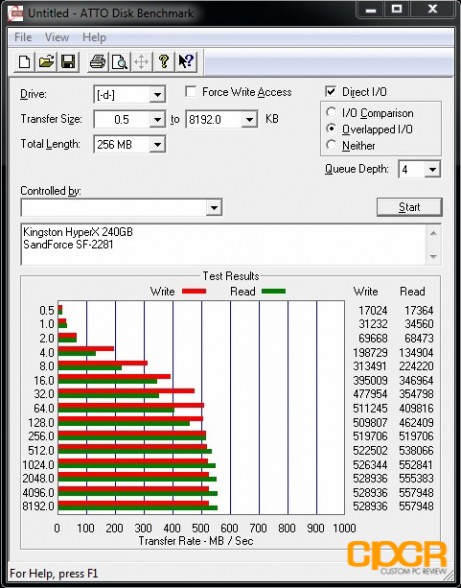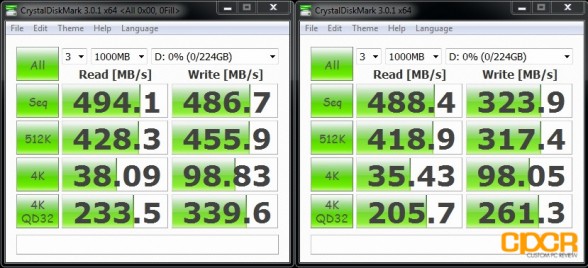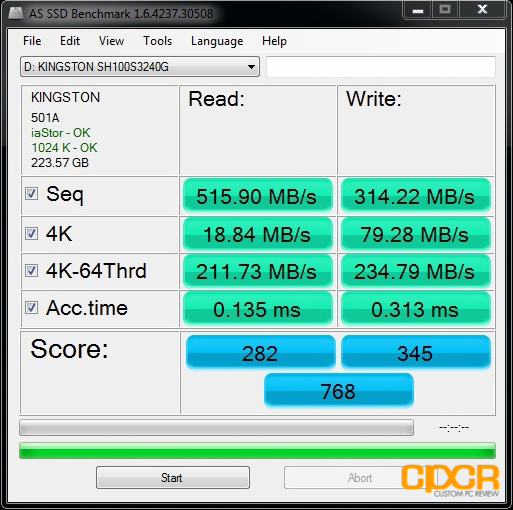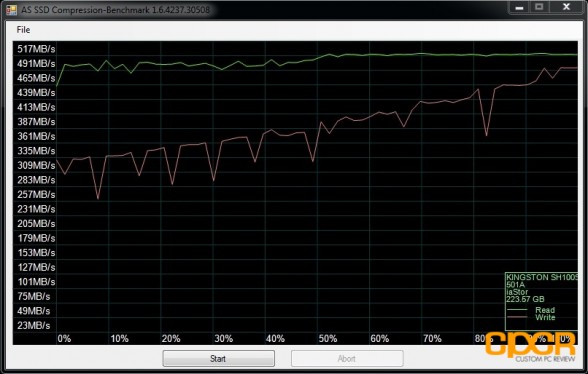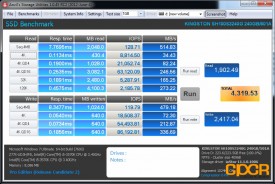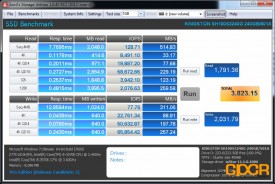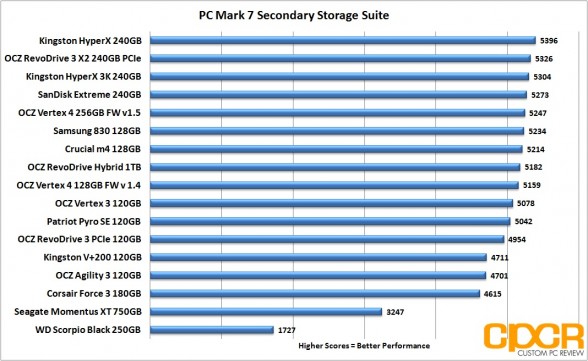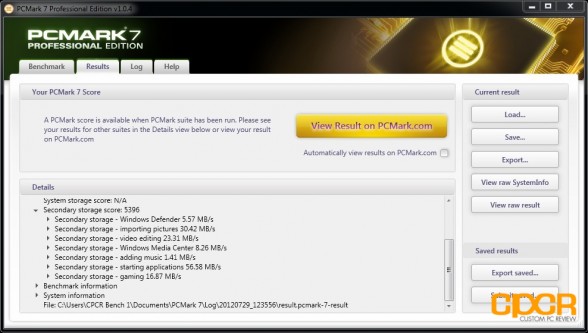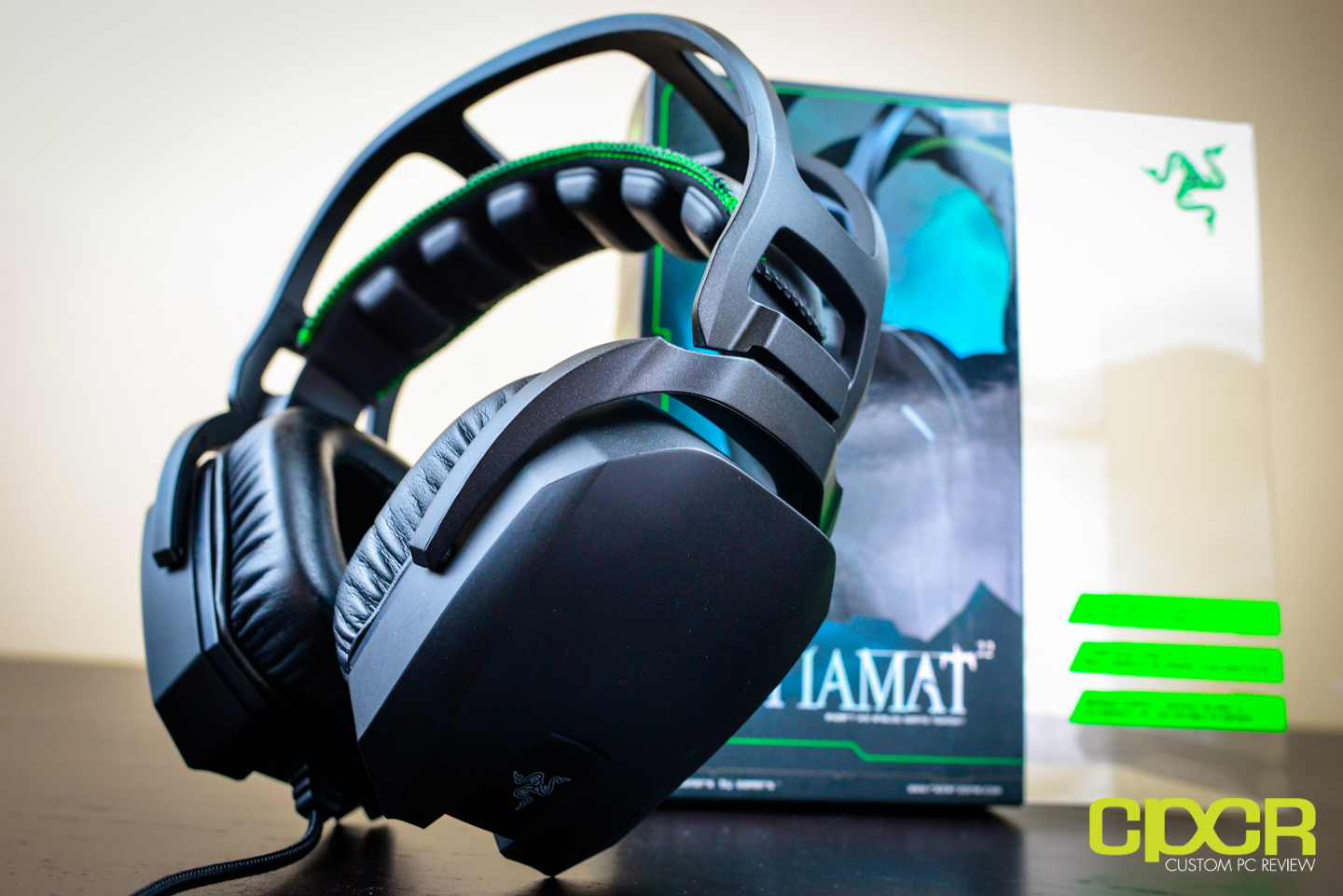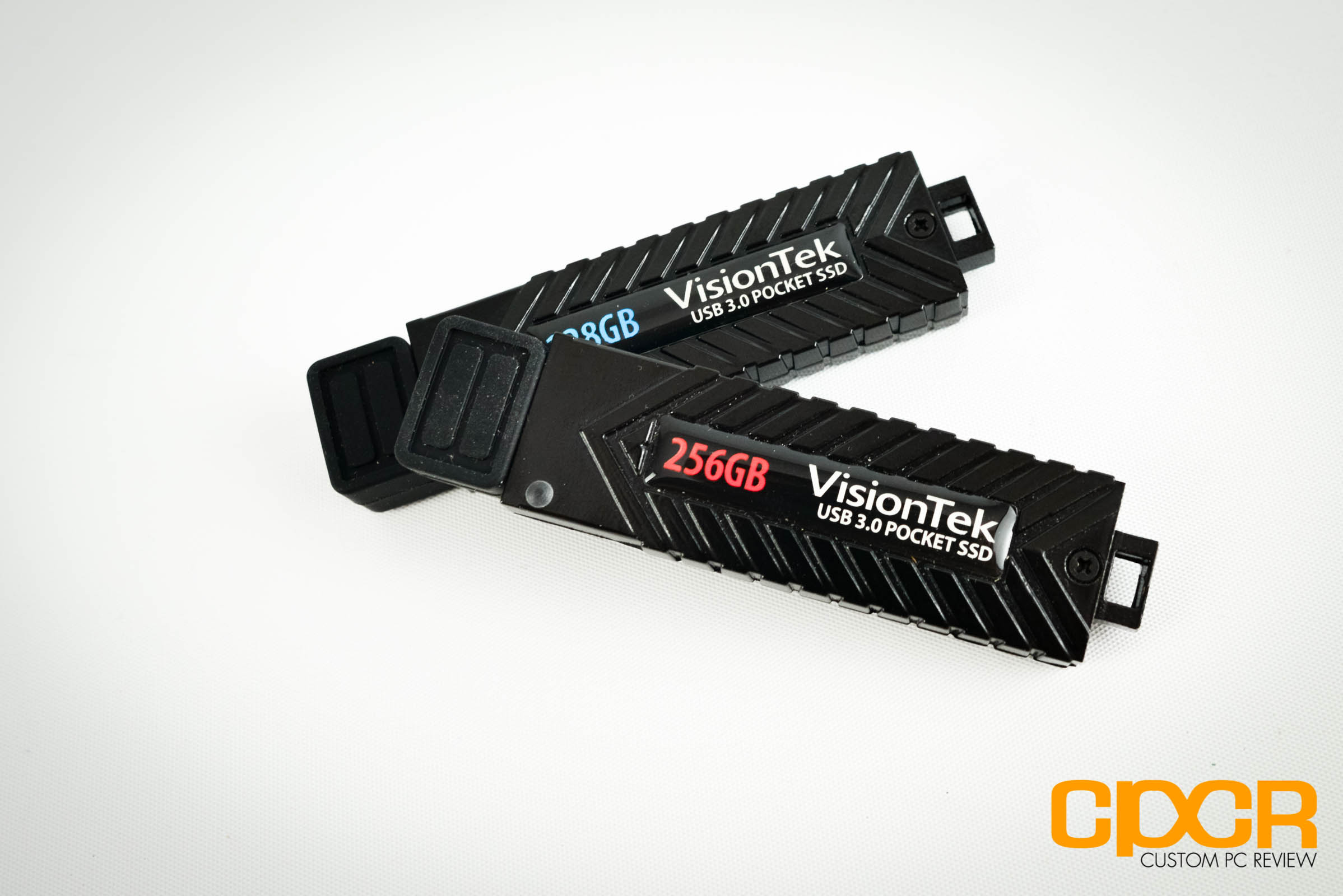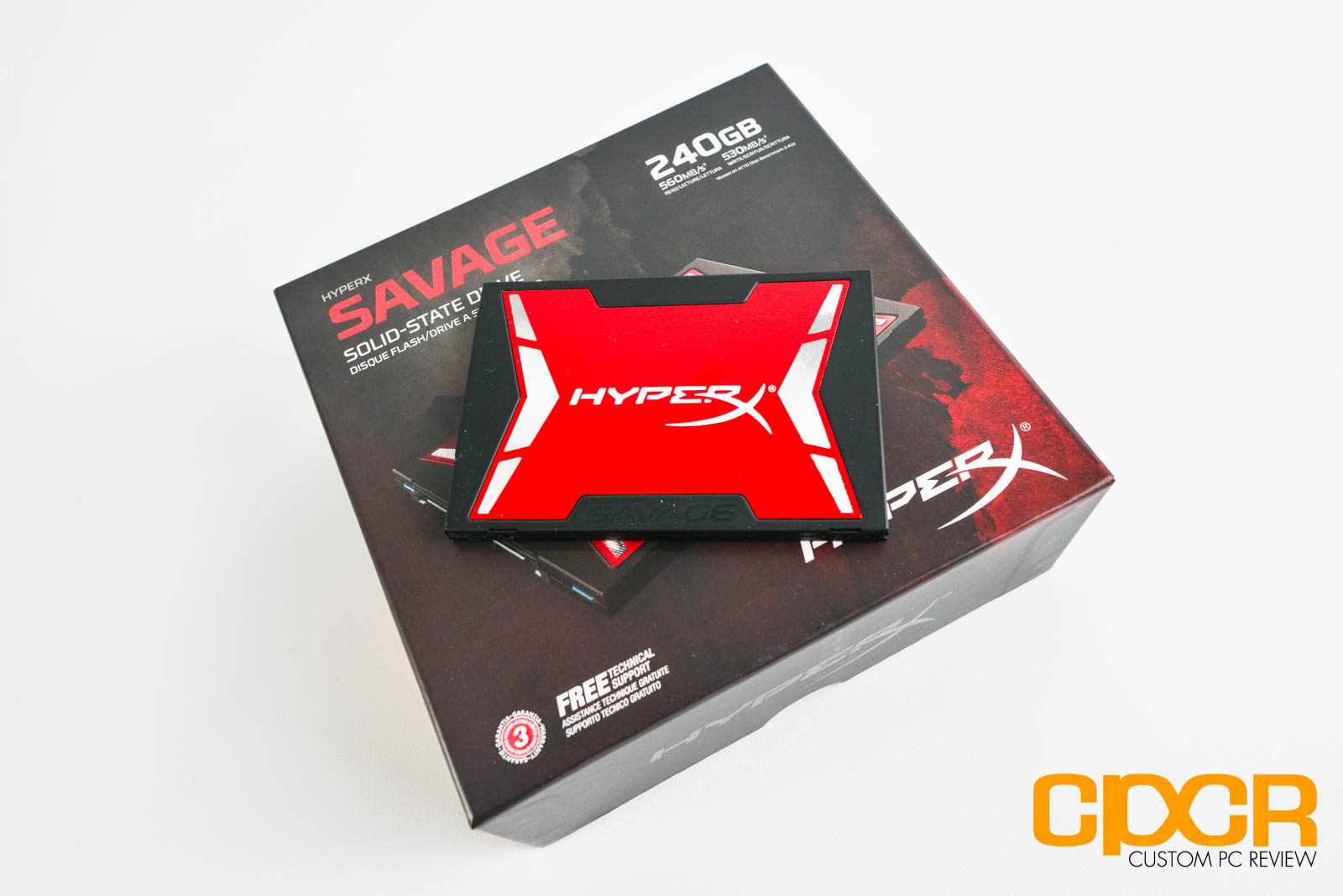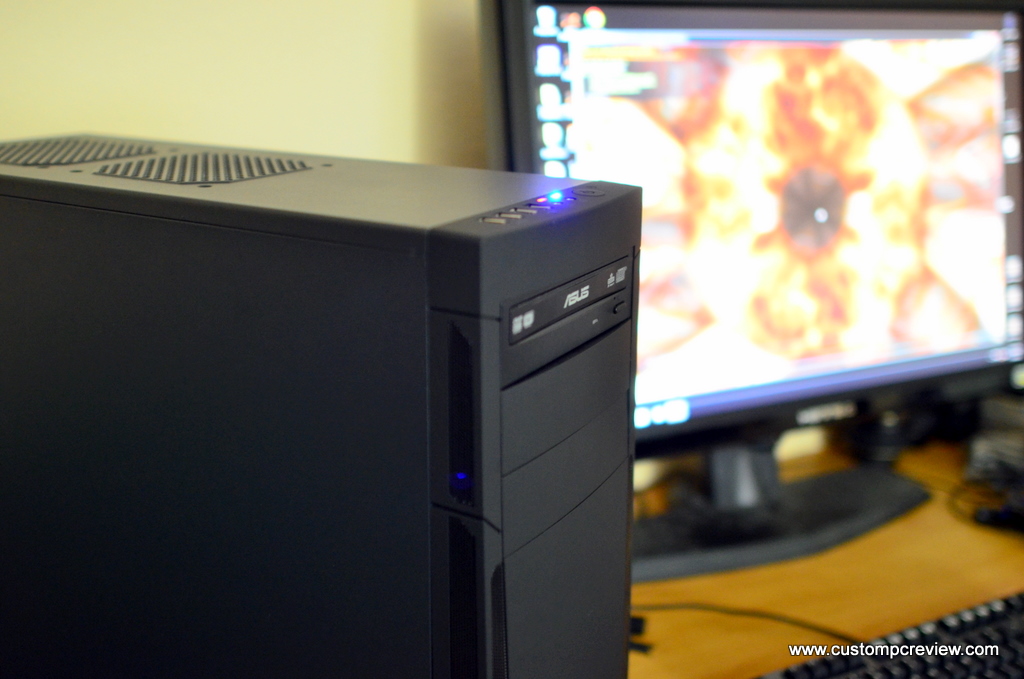[section label=1. Introduction]
High Endurance HyperX
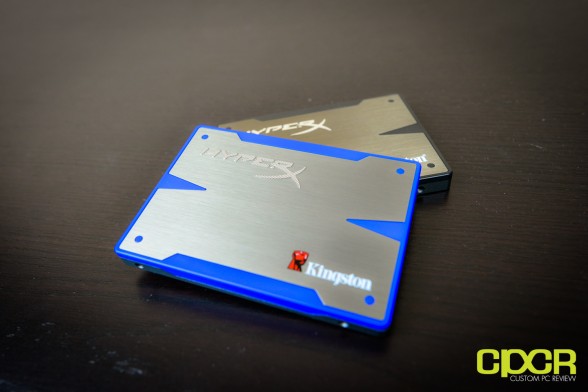 A couple weeks ago, we reviewed the Kingston HyperX 3K 240GB SSD and we were quite impressed with its exeptional value, great looks, and blazing performance. Today, we’ll be reviewing the 240GB edition of the original Kingston HyperX.
A couple weeks ago, we reviewed the Kingston HyperX 3K 240GB SSD and we were quite impressed with its exeptional value, great looks, and blazing performance. Today, we’ll be reviewing the 240GB edition of the original Kingston HyperX.
For those who aren’t familiar with SSDs, SSDs (in the most basic terms) are storage drives that store data on NAND memory controlled via a SSD controller. This NAND memory typically comes in many different forms, but regardless of what memory is used, this NAND memory only has a limited number of write cycles before data can no longer be written to it. These are typically counted in program/erase cycles, or P/E cycles.
With that out of the way, we’ll be talking a little bit about the difference between the original Kingston HyperX SSD and the newer Kingston HyperX 3K SSD. For the most part, the two drives are quite similar as both drives are using synchronous NAND and both have similar design (with the exception that they differ in color, which we’ll see a bit later). However, the main difference lies with the grade of NAND memory that’s being used as the original HyperX features 5,000P/E cycle NAND instead of the HyperX 3K’s 3,000 P/E cycle NAND. This means that the NAND in the original HyperX will last longer especially for those who must constantly move a lot of data around every day.
HyperX 240GB Specifications
| Capacity | 120GB | 240GB | 480GB |
|---|---|---|---|
| Controller | SandForce SF-2281 | SandForce SF-2281 | SandForce SF-2281 |
| NAND | Synchronous | Synchronous | Synchronous |
| Sequential Reads | 555MB/s | 555MB/s | 540MB/s |
| Sequential Writes | 510MB/s | 510MB/s | 450MB/s |
| Interface | SATA 3 6GB/s | SATA 3 6GB/s | SATA 3 6GB/s |
[section label=2. A Closer Look (Exterior)]
A Closer Look at the HyperX 240GB
Here’s the packaging for the HyperX. It’s made very clear up front that we’ve got a 240GB SSD with read speeds up to 555MB/s and write speeds up to 510MB/s.
Accessories in the box include simply the documentation, a 2.5″ to 3.5″ adapter, and some mounting screws.
Taking the HyperX out of the box, it looks like the HyperX is identical to the HyperX 3K except the drive has blue trim instead of black. The top of the drive is finished with a metal finish and the top left of the drive includes a HyperX logo.
Here’s a look at the rear of the drive. We get a huge sticker in the middle which includes all the information for the drive.
Here’s a look at the connectors on the HyperX. We’ve got a SATA 3 6GB/s and SATA power connector. Fairly standard stuff.
[section label=3. A Closer Look (Interior)]
A Closer Look at the HyperX 240GB
Unlike opening most other SSDs, opening up the Kingston HyperX (and every other Kingston SSD I’ve dealt with) requires both the use of a T6 torx screwdriver and breaking the warranty void if removed sticker.
Opening up the HyperX, we’ve got a fairly crowded PCB. The top of the PCB includes a SandForce SF-2281 controller along with eight Intel branded NAND chips.
Moving around to the back of the PCB, we’ve got another eight Intel branded NAND chips. Both the top and bottom of the casing includes large heat pads for heat dissipation.
Here’s a closer look at the SandForce SF-2281VB1-SDC controller powering the HyperX.
Here’s a closer look at the Intel branded 25nm synchronous 5,000 P/E MLC NAND modules Kingston is using for the HyperX. Seems like the only difference between the Intel 5,000 P/E NAND chip (left) and the 3,000 P/E NAND chip (right) is that the 5,000 P/E NAND chip’s model is 29F16B08CCME2 while the 3,000 P/E NAND chip’s model is 29F16B08CCME3. Since we’ve got 16 NAND chips in total, each chip is carrying a total capacity of 16GB each with ~16GB set aside for over-provisioning.
[section label=4. ATTO Disk Bench]
Ivy Bridge Test Bench
| CPU | Intel Core i5 3570K |
|---|---|
| Motherboard | Gigabyte Z77X-UD3H |
| Memory | Kingston HyperX Genesis 16GB DDR3 2133MHz |
| Graphics | Intel HD4000 Graphics |
| Storage | Patriot Pyro SE 120gb |
| Power Supply | Corsair HX650 |
| Case | HSPC High Speed Tech Station |
| Optical Drive | ASUS OEM DVD Drive |
| Operating System | Windows 7 Ultimate x64 SP1 |
Special thanks to Gigabyte, Kingston, and HSPC for sponsoring our test bench!
HyperX 240GB Performance
ATTO Disk Benchmark v2.46
ATTO Disk Benchmark is one of the industry’s oldest and most popular benchmarks for testing disk read/write speeds. This benchmarks allows read and write testing using predefined block sizes and gives us a good idea of read/write speeds with different sized files. Most SSD manufacturers these days prefer using this benchmark when advertising SSDs as it tests using compressible data, which tends to yield better performance.
558 MB/s sequential reads and 529 MB/s sequential writes, well above the advertised specs. Oh yeah, we’re in SandForce land.
[section label=5. Crystal Disk Mark / AS SSD]
HyperX 240GB Performance
Crystal Disk Mark 3.0.1 x64
Crystal Disk Mark is another popular benchmark which allows us to measure both sequential read/write speeds as well as random read/write speeds. With this benchmark, tests can be run using both random fill (incompressible data) and 0 fill (compressible data). Realistically in typical computer usage scenarios, data being transferred will consist of a mixture of both incompressible and compressible data.
Moving into Crystal Disk Mark, it’s pretty apparent this is going to be one very, very high performing SSD. What’s particularly interesting here is how strong the incompressible writes are even compared to other top tier SandForce based SSDs. 4K numbers aren’t too bad either with the drive’s compressible and incompressible numbers looking near identical.
AS SSD Benchmark
AS SSD is a very commonly used benchmark used to measure SSD performance in a number of categories. Here, tests are run using incompressible data, which most simulate real world usage. It also outputs a final score at the conclusion of the test based off the read and write performance of the drive.
As usual, AS SSD confirms our findings in Crystal Disk Mark. What’s particularly interesting about AS SSD though is its compression benchmark which we’ve included here as well. Similar to other SandForce based SSDs, the drive’s write speeds start off fairly slow at around the 300 MB/s mark and begins to increase significantly as the data becomes more compressible.
[section label=6. Anvil Storage Utilities / PC Mark 7]
HyperX 240GB Performance
Anvil Storage Utilities
Anvil Storage Utilities is an excellent all around benchmark for testing many different functions of SSD performance. For our purposes, we ran the benchmark through both 0 fill mode (compressible data) on the left and 100% compression (incompressible data) on the right.
Here we’ve got the Anvil Storage Utilities numbers for both compressible and incompressible data. Again, we’re looking at some strong, well rounded performance from this drive.
PC Mark 7
The PC Mark 7 storage test tests the SSD under many different real world tests such as gaming, video editing, etc. This is most representative of the SSD’s performance under real world situations.
In PC Mark 7, the HyperX 240GB was able to snatch a full 5396 points, which puts it right at the very top of our chart. Not only is this the highest scoring drive we’ve tested on this benchmark, it outperforms the second on the list by a whopping 70 points!
[section label=7. Conclusion]
HyperX 240GB Conclusions
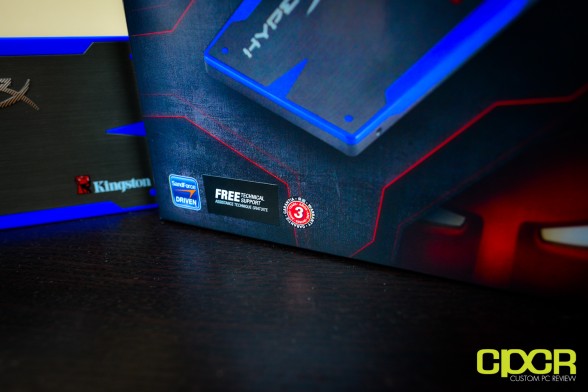 The exceptional performance of Kingston’s HyperX wasn’t surprising at all and the HyperX SSD continues to represent the ideology behind Kingston’s HyperX brand. Benchmark numbers seen here were among the top in compressible performance and incompressible performance is among the top as well. Additionally, the HyperX’s PC Mark 7 score of 5396 is the highest score we’ve ever seen thus far. Appearance wise, the HyperX is an amazing looking SSD as well. It’s top notch design gives the SSD the high performance look it deserves.
The exceptional performance of Kingston’s HyperX wasn’t surprising at all and the HyperX SSD continues to represent the ideology behind Kingston’s HyperX brand. Benchmark numbers seen here were among the top in compressible performance and incompressible performance is among the top as well. Additionally, the HyperX’s PC Mark 7 score of 5396 is the highest score we’ve ever seen thus far. Appearance wise, the HyperX is an amazing looking SSD as well. It’s top notch design gives the SSD the high performance look it deserves.
Pricing on the Kingston HyperX 240GB stand alone drive is currently around $374.99, which to be blunt is quite pricey for an SSD these days. However, do remember that Kingston is using higher endurance 5,000 P/E NAND, which is nearly double the lifespan of 3,000 P/E NAND. That said, most consumers probably won’t need high endurance NAND and will be perfectly fine with the equally capable Kingston HyperX 3K SSD, which produced very similar performance in comparison to the original HyperX SSD. However, given the higher endurance NAND included here and higher pricetag on this SSD, I’d really like to see Kingston offer a 5 year warranty instead of the 3 year offered here.
So I’ve mentioned that the HyperX 3K is perfectly fine for most consumers out there. In that case then, who should actually be interested in the original HyperX? Well, for the most part it’ll be those who work with a lot of data. Using the SSD as a photo/video editing scratch disk for example is something that the original HyperX with its higher endurance NAND would be better at as it’s capable of more writes overall.
With most manufacturers carrying only lower endurance 3K P/E NAND these days, SSDs with high endurance 5K P/E NAND are becoming increasingly rare. For Kingston to even offer a product like the original HyperX SSD to give consumers the option of choosing between a 3K P/E and 5K P/E is already a massive win by itself. Add in the fact that it’s one of the fastest SSDs we’ve tested so far? Even more win.
Bottom Line
Those looking for a hyper endurance, hyper performance, hyper reliable SSD with killer looks, look no further. Hyperrecommended!
Special thanks to Kingston for making this review possible!
Currently the Kingston HyperX 240GB SSD is available at Newegg.

